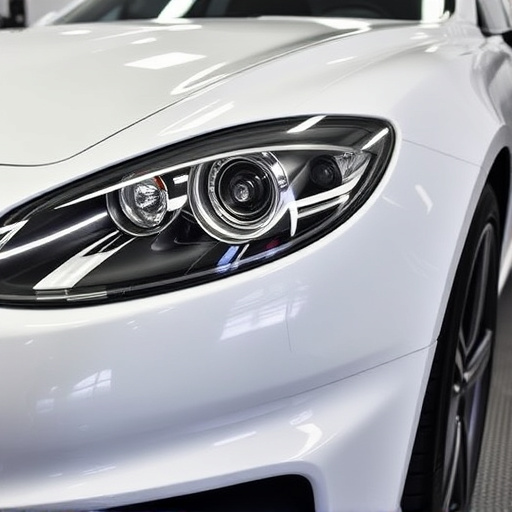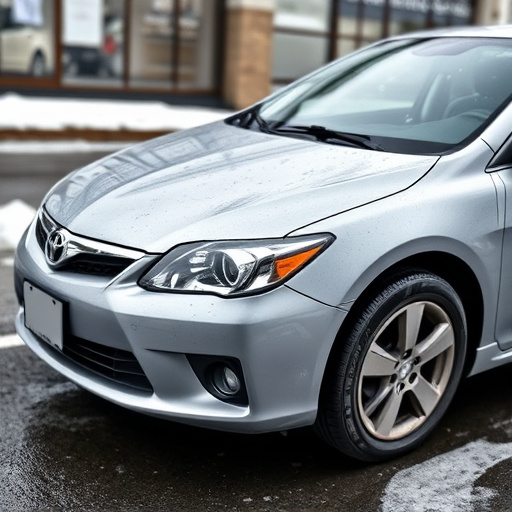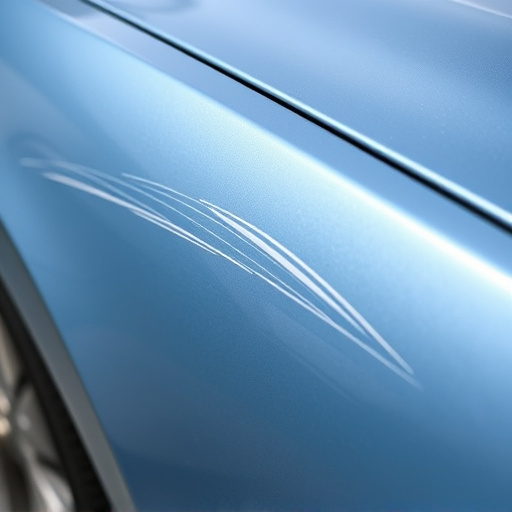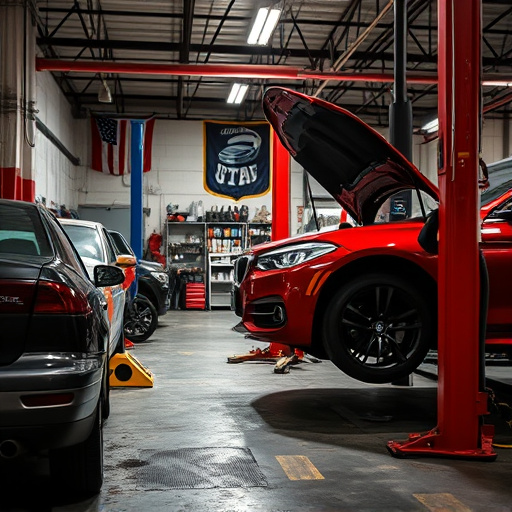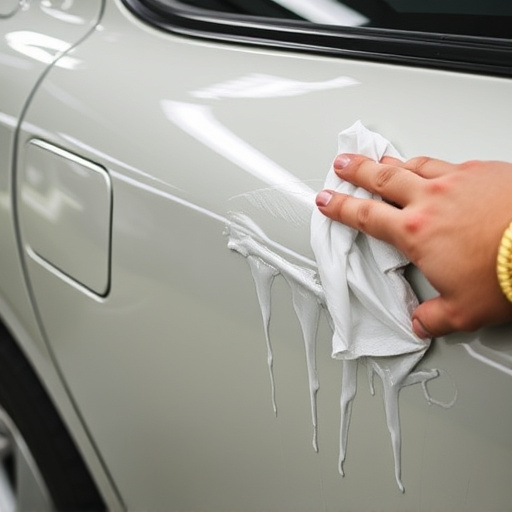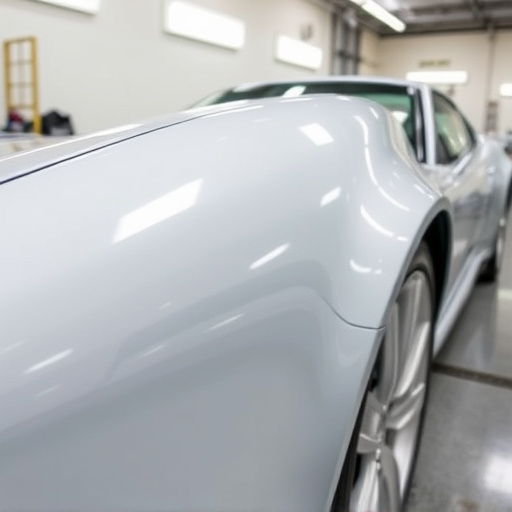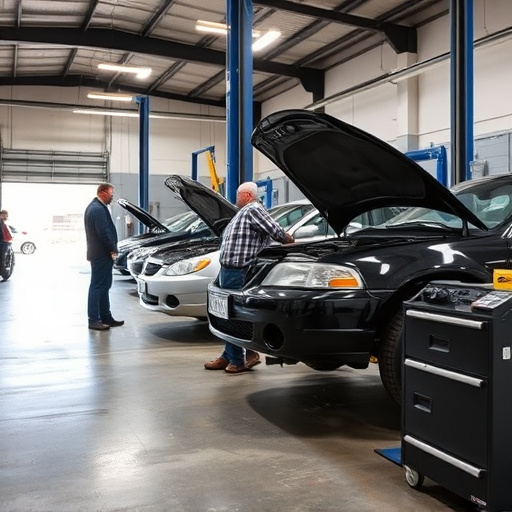Mercedes ADAS calibration is a crucial, specialized process that ensures the safe operation of Advanced Driver Assistance Systems (ADAS), particularly Autonomous Emergency Braking (AEB). Using advanced tools like laser scanners, technicians meticulously map car surroundings, adjust sensor data, and fine-tune parameters to enhance AEB performance. Regular calibration, especially after repairs, is vital for optimal safety, reliability, and public trust in self-driving vehicles, addressing challenges with evolving technology through meticulous practices.
Mercedes’ Advanced Driver Assistance Systems (ADAS) calibration is a cornerstone of autonomous emergency braking, enhancing safety on the road. This article delves into the intricate process behind this technology, exploring how precise calibration enables vehicles to perceive and react to their surroundings. We’ll uncover the technical tools and methods used, analyze the benefits for driver and pedestrian safety, and discuss challenges in implementation. Understanding Mercedes ADAS calibration is key to appreciating the evolution of autonomous driving.
- Understanding Mercedes ADAS Calibration: The Foundation of Safe Autonomy
- Technical Aspects: Tools and Processes for Precise Calibration
- Benefits and Challenges: Impact on Safety and Future Developments
Understanding Mercedes ADAS Calibration: The Foundation of Safe Autonomy

Mercedes ADAS calibration is a critical process that forms the very foundation of safe autonomous driving. Advanced Driver Assistance Systems (ADAS) rely on precise sensor data to enable features like Autonomous Emergency Braking (AEB). This intricate system includes cameras, lidar, and radar sensors that work in harmony to detect potential hazards and calculate the vehicle’s path. However, for these systems to function optimally, they require meticulous calibration, ensuring each sensor is aligned and communicating accurately with the vehicle’s control unit.
The process involves adjusting and fine-tuning these sensors to account for factors like environmental conditions, manufacturing variations, and age-related deterioration. Regular Mercedes ADAS calibration checks are essential, especially after any auto glass repair or extensive auto body work, as even minor adjustments can impact the system’s performance. By maintaining accurate calibration, Mercedes vehicles can react swiftly and accurately to unexpected events on the road, ultimately enhancing safety for both passengers and pedestrians.
Technical Aspects: Tools and Processes for Precise Calibration

Mercedes ADAS calibration involves a meticulous process to ensure the autonomous emergency braking (AEB) system functions accurately and reliably. This intricate task requires specialized tools designed for precise adjustments, such as advanced laser scanners and computer-aided measurement systems. These tools enable technicians to map the car’s surroundings with incredible accuracy, identifying potential hazards and configuring the AEB system accordingly.
The calibration process involves careful manipulation of sensor data, adjusting parameters within the vehicle’s computer system to optimize response times. Every aspect of the car body repair is crucial, from the positioning of sensors to the programming of algorithms, as even minor discrepancies can lead to inaccurate braking reactions. Mercedes benz repair shops employ certified technicians who follow strict protocols to guarantee that the AEB system is fine-tuned for optimal performance, ensuring the safety of every journey.
Benefits and Challenges: Impact on Safety and Future Developments

Mercedes ADAS calibration plays a pivotal role in enhancing vehicle safety by enabling precise and efficient operation of Advanced Driver Assistance Systems (ADAS). One of the key benefits is its impact on autonomous emergency braking systems, which can significantly reduce collision risks. Calibration ensures that sensors accurately detect obstacles and pedestrians, enabling the vehicle to react swiftly and safely. Moreover, regular calibration improves system reliability, preventing false alarms and ensuring optimal performance over time.
While Mercedes ADAS calibration brings about these safety enhancements, it also presents challenges. Maintaining accurate calibration requires specialized equipment and expertise, which can be a barrier for many auto body shops and vehicle paint repair facilities. Additionally, as technology evolves, future developments in autonomous driving may necessitate more frequent calibrations and updates to keep up with advancements in ADAS capabilities. This ongoing process is crucial for fostering public trust in self-driving cars, addressing concerns related to safety and reliability through meticulous calibration practices, even in the face of rapid technological changes.
Mercedes ADAS calibration is a pivotal component in advancing autonomous vehicle safety. By ensuring precise sensor alignment and performance, it underpins the effectiveness of emergency braking systems, ultimately contributing to reduced accident risks. As technology evolves, continuous improvements in calibration methods and standards will be essential to meet the growing demands of autonomous driving.
